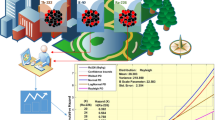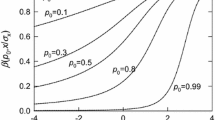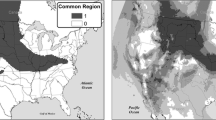Abstract
The decision that a given detection level corresponds to the effective presence of a radionuclide is still widely made on the basis of a classic hypothesis test. However, the classic framework suffers several drawbacks, such as the conceptual and practical impossibility to provide a probability of zero radioactivity, and confidence intervals for the true activity level that are likely to contain negative and hence meaningless values. The Bayesian framework being potentially able to overcome these drawbacks, several attempts have recently been made to apply it to this decision problem. Here, we present a new Bayesian method that, unlike the previous ones, presents two major advantages together. First, it provides an estimate of the probability of no radioactivity, as well as physically meaningful point and interval estimates for the true radioactivity level. Second, whereas Bayesian approaches are often controversial because of the arbitrary choice of the priors they use, the proposed method permits to estimate the parameters of the prior density of radioactivity by fitting its marginal distribution to previously recorded activity data. The new scheme is first mathematically developed. Then, it is applied to the detection of radioxenon isotopes in noble gas measurement stations of the International Monitoring System of the Comprehensive Nuclear-Test-Ban Treaty.







Similar content being viewed by others
Notes
They may depend on other parameters as well, but in order to simplify the presentation, we retain the dependency in μ only. See [9] for a presentation of models with several unknown parameters.
References
Currie LA (1968) Anal Chem 335:586
ISO 11929-7 (2005) Determination of the detection limit and decision threshold for ionizing radiation measurements, part 7: fundamentals and general applications
Potter WE (1999) Health Phys 76(2):186
MARLAP Multi-agency radiological laboratory analytical protocols manual (2004) vol. 20: detection and quantification capabilities [http://mccroan.com/marlap.htm]
ISO 11929:2010(E) (2010) Determination of the characteristic limits (decision threshold, detection limit and limits of the confidence interval) for measurements of ionizing radiation—fundamentals and application, 1st edn
Zähringer M, Kirchner G (2008) Nucl Instrum Methods Phys Res A 594:400
Vivier A, Le Petit G, Pigeon B, Blanchard X (2009) J Radioanal Nucl Chem 282:743
Robert CP (2001) The Bayesian choice: from decision-theoretic motivations to computational implementation, 2nd edn. Springer, New York
Leonard T, Hsu JSJ (1999) Bayesian methods: an analysis for statisticians and interdisciplinary researchers. Cambridge University Press, Cambridge
Donnelly P (2005) Significance 2(1):46
CTBT. Text of Comprehensive Nuclear-Test-Ban Treaty (1996) See Web Page of the United Nations Office for Disarmament Affairs (UNODA), Multilateral Arms Regulation and Disarmament Agreements, CTBT [http://disarmament.un.org/TreatyStatus.nsf]
Hoffmann W, Kebeasy R, Firbas P (1999) Phys Earth Planet Interiors 113:5
Zähringer M, Becker A, Nikkinen M, Saey P, Wotawa G (2009) J Radioanal Nucl Chem 282:737
Fontaine JP, Pointurier F, Blanchard X, Taffary T (2004) J Environ Radioact 72:129
Le Petit G, Armand P, Brachet G, Taffary T, Fontaine JP, Achim P, Blanchard X, Piwowarczyk JC, Pointurier F (2008) J Radioanal Nucl Chem 276:391
Ringbom A, Larson T, Axelsson A, Elmgren K, Johansson C (2003) J Radioanal Nucl Chem A 508:542
Dubasov YV, Popov YS, Prelovskii VV, Donets AY, Kazarinov NM, Mishurinskii VV, Popov VY, Rykov YM, Skirda NV (2005) Instrum Exp Tech 48:373
Schulze J, Auer M, Werzi R (2000) Appl Radiat Isot 53:23
Auer M, Axelsson A, Blanchard X, Bowyer TW, Brachet G, Bulowski I, Dubasov Y, Elmgren K, Fontaine JP, Harms W, Hayes JC, Heimbigner TR, McIntyre JI, Panisko ME, Popov Y, Ringbom A, Sartorius H, Schmid S, Schulze J, Schlosser C, Taffary T, Weiss W, Wernsperger B (2004) Appl Radiat Isot 60:863
Stocki TJ, Blanchard X, D’Amours R, Ungar RK, Fontaine JP, Sohier M, Bean M, Taffary T, Racine J, Tracy BL, Brachet G, Jean M, Meyerhof D (2005) J Environ Radioact 80:305
Saey PRJ, Schlosser C, Achim P, Auer M, Axelsson A, Becker A, Blanchard X, Brachet G, Cella L, De Geer L-E, Kalinowski MB, Le Petit G, Peterson J, Popov V, Popov Y, Ringbom A, Sartorius H, Taffary T, Zähringer M (2010) Pure Appl Geophys 167:499
Ringbom A, Elmgren K, Lindh K, Peterson J, Bowyer TW, Hayes JC, McIntyre JI, Panisko M, Williams R (2009) J Radioanal Nucl Chem 282:773
England TR, Rider BF (1993) Los Alamos National Laboratory, LA-UR-94-3106, ENDF-349
Fletcher R (1987) Practical methods of optimization, 2nd edn. Wiley, New York
Currie LA (2007) J Radioanal Nucl Chem 276:285
Heinrich J (2003) Pittfals of goodness-of-fit from likelihood. PHYSTAT2003, SLAC, Stanford, CA, September 8–11
Author information
Authors and Affiliations
Corresponding author
Appendix: Bayesian estimates for the proposed priors
Appendix: Bayesian estimates for the proposed priors
In order to lighten the notations, the a priori probability of zero activity P(H 0) is denoted by p 0 in the following results. According to (6), since f(x|μ) = 1/σ φ((x − μ)/σ), the a posteriori probability of H 0 is always of the form:
According to (7), the posterior density of μ is always of the form:
The marginal density f(x), the Bayesian point estimate (8), and the credibility interval (9) for μ are given below for the three priors.
Uniform prior
With the uniform prior (13), the marginal density is given by:
Bayesian point estimate:
1 − γ credibility interval:
Exponential prior
Marginal density with the exponential prior (14):
Bayesian point estimate:
1 − γ credibility interval:
Half-Gaussian prior
Let us define ω according to:
Marginal density with the half-Gaussian prior (15):
Bayesian point estimate:
1 − γ credibility interval:
Rights and permissions
About this article
Cite this article
Rivals, I., Fabbri, C., Euvrard, G. et al. A Bayesian method with empirically fitted priors for the evaluation of environmental radioactivity: application to low-level radioxenon measurements. J Radioanal Nucl Chem 292, 141–153 (2012). https://doi.org/10.1007/s10967-011-1390-6
Received:
Published:
Issue Date:
DOI: https://doi.org/10.1007/s10967-011-1390-6




